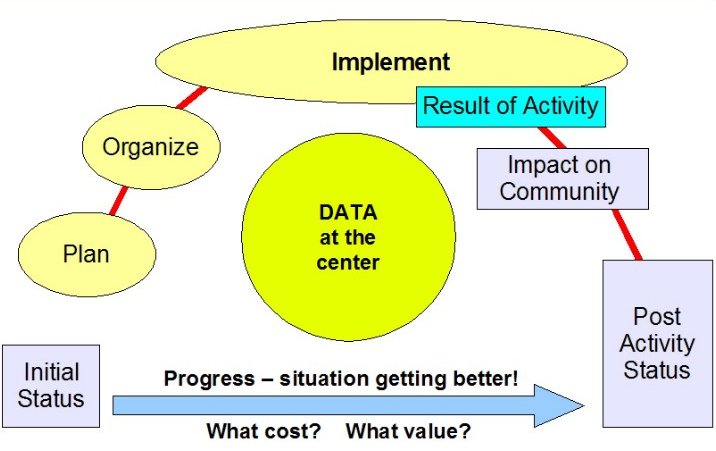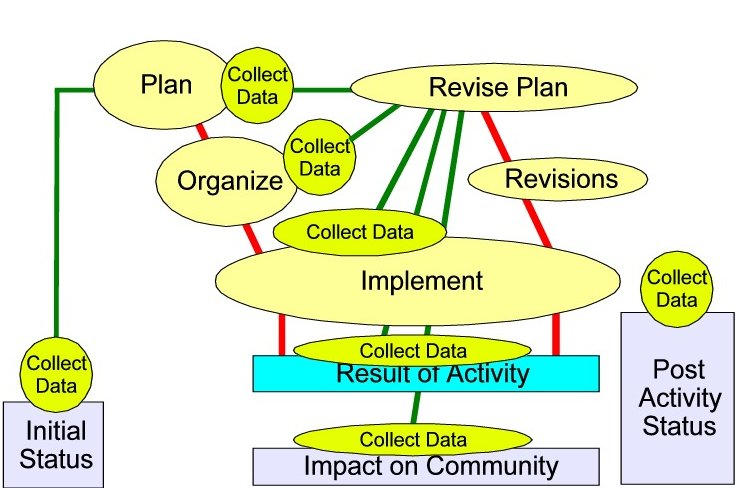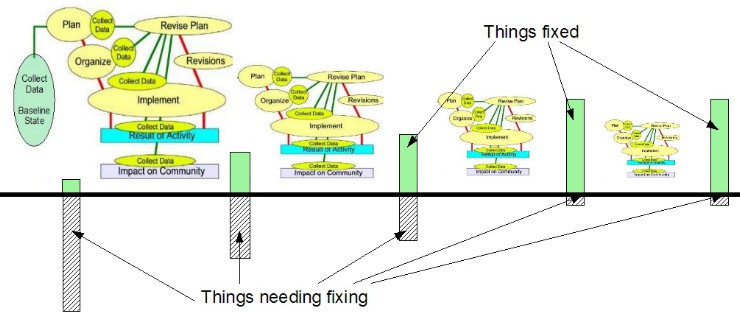TPB thinking circa 2003
DATA AT THE CENTER
|
These graphics were prepared in the context of work that I had been doing to advocate for Community Centric Sustainable Development. Data was at the center. The goal was that the situation would be better after the project work than it had been before. Every step of the project cycle was informed by relevant data.
|


|
During the 20+ years that I did consulting work for the World Bank and the UN, project plans had a focus on the planned cost of the various activities, and the related timetable of disbursements. Oversight monitoring and evaluation had a focus on these aspects of the project. Much less attention was paid to the impact being achieved. In many cases a project was assumed to be 'on track' and going well if the loan disbursements were on schedule. Surprise ... not true!

|


|
A few project managers (CTOs) used data actively to manage their projects. They changed the details of project activities to get the most impact for the least expenditue. The Shenge Project in Sierra Leone is a good example.
|


|
Another lesson learned was that gains from a project could be maintained with a relatively low ongoing cost. Also that some aspects of improvement took time and needed ongoing assistance. Data should be used to identify what needs to be done, and to do it most effectively. During my time doing work for the World Bank and the UN, there was little appetite for this sort of sustainable development.
|
|
.
|
|
Data at the Center
|
|
Planning should be based on relevant facts. Facts are represented by data ... critical data rather than merely a lot of data.
|

|
|
.
|
|
Data used for iterative improvement
|
|
The next graphic shows how initial status gets improved as a result of the activities ... activities that are planned, organized and implemented based on the data that is centric to everything.
|

|
|
.
|
|
Data and the Progress of Development
|
Detail data should be collected as rapidly as pssible to inform decision makes about what is working or not and decisions made to improve performance in a timely manner.
This graphic shows how data may be used to inform decisions at every stage of the process of development investment.
|

